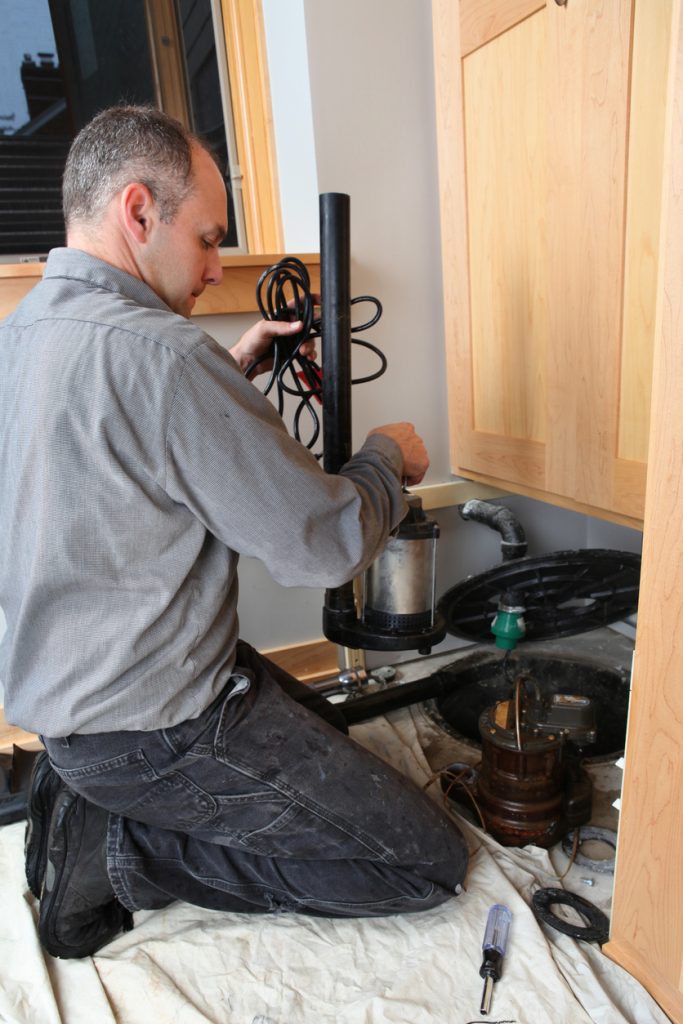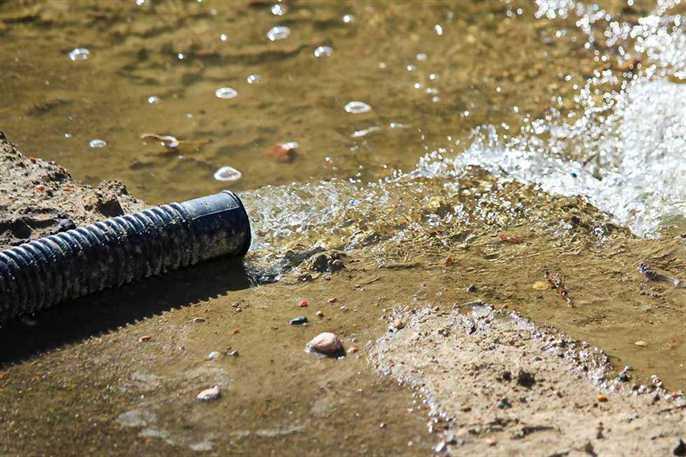Quick Methods for Servicing a Sump Pump
Quick Methods for Servicing a Sump Pump
Blog Article
How do you feel in regards to Keep Your Sump Pump Clean, It'll Keep You Dry?

Sump pumps are important components in lots of homes, particularly in areas susceptible to flooding or excessive dampness. They help avoid water damages by efficiently removing excess water from cellars or crawl spaces. However, like any other home appliance, sump pumps need normal maintenance to ensure they operate efficiently when needed the most. Cleaning your sump pump is a vital part of its maintenance, and comprehending just how to do it appropriately can conserve you from pricey repair services and possible disasters.
Introduction
Preserving a clean sump pump is crucial for its correct performance and long life. Neglecting this crucial job can cause clogs, malfunctions, and inevitably, water damage to your residential property. As a result, discovering how to cleanse a sump pump is essential for homeowners that rely on these tools to maintain their cellars completely dry and protected.
Signs of a Dirty Sump Pump
Knowing when your sump pump requires cleaning is crucial for stopping prospective breakdowns. Some typical indications that show a dirty sump pump consist of unusual noises during operation, reduced water flow, and visible particles in the pit. If you observe any one of these signs and symptoms, it's important to clean your sump pump immediately to avoid any kind of additional issues.
Planning for Cleansing
Prior to you start cleaning your sump pump, it's necessary to take some safety and security precautions. Start by shutting down the power to the pump to prevent any electrical crashes. Furthermore, put on suitable safety equipment, such as handwear covers and safety glasses, to safeguard yourself from dirt, particles, and possible pathogens.
Understanding the Sump Pump
Prior to diving into the cleaning procedure, it's important to have a standard understanding of how a sump pump works. Typically mounted in a pit or basin listed below the cellar floor, a sump pump includes a number of crucial elements, consisting of a pump, a float button, and a discharge pipeline. When water collects in the pit, the float button triggers the pump, which after that pumps the water out through the discharge pipeline, far from the structure's foundation.
Detailed Guide to Cleaning Up a Sump Pump
Shutting Off the Power
Begin by separating the power supply to the sump pump to avoid any kind of accidents while cleaning.
Looking For Proper Functioning
Before reinstalling the pump, execute a quick test to make sure that the float button turns on the pump appropriately. Put some water right into the sump pit and observe the pump's procedure. If whatever is operating appropriately, you can rebuild the pump and reconnect the power supply.
Getting Rid Of Particles and Dirt
Use a bucket or an inside story to eliminate any visible debris, dust, or sediment from the sump pit. Dispose of the particles appropriately to prevent it from obstructing the pump or the discharge pipe.
Cleaning up the Pump and Float Change
As soon as the pit is clear of particles, meticulously remove the pump from the pit. Evaluate the pump and the float switch for any indications of damages or wear. Utilize a soft brush or fabric to clean up the surfaces and remove any collected grime.
Flushing the System
After cleaning up the pump and float switch, flush the sump pit with clean water to eliminate any continuing to be dust or sediment. This will aid guarantee that the pump operates efficiently and successfully.
Upkeep Tips to Keep Your Sump Pump Clean
Along with routine cleaning, there are several upkeep pointers you can follow to maintain your sump pump in ideal problem:
Verdict
Cleaning your sump pump is an essential element of its maintenance and makes sure that it operates effectively when you require it one of the most. By complying with the actions described in this overview and integrating regular maintenance right into your routine, you can prolong the lifespan of your sump pump and shield your home from water damage.
6 STEPS ON HOW TO CLEAN A SUMP PUMP PROPERLY
UNDERSTANDING SUMP PUMPS
Your sump pump plays a crucial role in protecting your home by managing and removing excess water. It primarily functions as a “shield”, guarding your basement against the damaging effects of water accumulation. The pump is housed in a sump pit in the lowest part of your basement, and its job is to pump out any water that collects there.
During heavy rainfalls or when snow melts rapidly, water can infiltrate your basement, posing potential risks like flooding, structural damage, and harmful mold growth. Here, the sump pump springs into action, pumping out the intruding water and directing it away from your home.
SAFETY FIRST
Before cleaning, remember to prioritize safety. Disconnect the sump pump from the power source to prevent any accidental electric shocks. Also, wear sturdy gloves to protect your hands from any sharp or dirty components within the pump.
REMOVE THE SUMP PUMP
After ensuring your safety, the next step is to remove the sump pump from its pit. Doing this might require careful maneuvering as you don’t want to damage any pump components. Once removed, clean the sump pit to remove any accumulated debris or sludge.
INSPECT THE PUMP
Inspect the pump for any visible signs of wear or damage. Check the power cord, float switch, and impeller housing. If any components look worn out or damaged, consider replacing them to ensure optimal performance.
CLEAN THE PUMP
Thoroughly clean the pump with warm, soapy water. Make sure to rid it of any dirt, gravel, or other debris that might impede its performance. You can use a toothbrush to clean the small, hard-to-reach parts of the pump.
REINSTALL THE SUMP PUMP
Reinstall the pump into the sump pit Make sure it’s positioned correctly to remove the water effectively Once it’s back in place, reconnect it to the power source TEST THE PUMP
Finally, pour some water into the pit to ensure the pump works correctly. It should start automatically and begin pumping out the water; if it doesn’t, check the power source and the positioning of the pump.
Remember, while cleaning your sump pump is an essential part of home maintenance, hiring a professional plumber for a thorough inspection and cleaning at least once a year is also important. This will ensure that your pump is in optimal condition, ready to protect your home from potential water damage.
BEST PRACTICES FOR CLEANING SUMP PUMP DISCHARGE PIPES
Regular Inspection: Regularly inspect your discharge pipes, especially during heavy rainfall or snowmelt periods. Look for any signs of blockage or damage. Early detection of problems can prevent serious issues down the line. Periodic Cleaning: Over time, sediment and debris can accumulate in the discharge pipes, impeding the flow of water. Regular cleaning helps keep the pipes clear and functioning efficiently. You can use a high-pressure water jet to effectively clean the pipes. Insulation During Winter: In colder climates, discharge pipes can freeze, blocking the outflow of water. Protect your discharge pipes from freezing temperatures by insulating them with foam pipe insulation. This will ensure the sump pump can continue to discharge water even in freezing conditions. Proper Positioning: The discharge pipe should be positioned to direct water away from your home’s foundation. Improper positioning can lead to water seeping back into the basement. Ensure the pipe is long enough and angled correctly. Installation of a Check Valve: A check valve prevents water from flowing back into your sump pit after the pump has pushed it out. Installing a check valve helps maintain the efficiency of your sump pump and reduces the risk of flooding. Minimize Pipe Turns: Every curve or turn in the discharge pipe can decrease the efficiency of water flow. By minimizing turns and bends in your discharge pipe, you can increase the efficiency of your sump pump. https://www.fullspeedplumbing.com/how-to-clean-a-sump-pump-properly9999/

We are very fascinated with and I'm hoping you liked the entire post. Sharing is good. You won't know, you may be doing someone a favor. Thanks for your time. Please come by our site back soon.
Hire A Pro Report this page